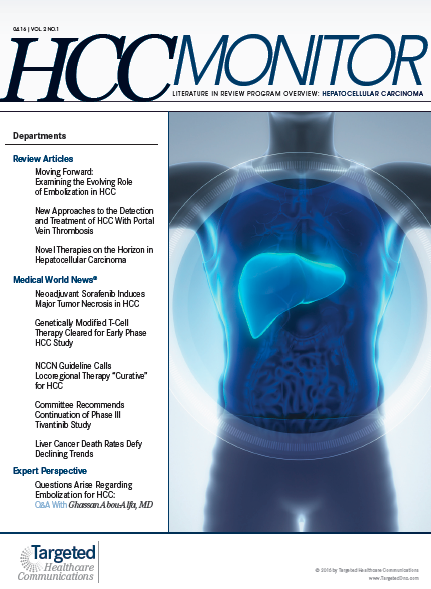Liver Cancer Death Rates Defy Declining Trends
Death rates from cancer continue to drop in the United States, with one troubling exception: more people are dying from liver cancer.
The annual Report to the Nation on the Status of Cancer, issued each year since 1975, had mostly good news: an ongoing decline in cancer incidence has come from decades of progress in preventing the disease, especially in getting Americans to quit smoking. While lung cancer remains the leading cause of cancer death in both men and women, rates are dropping. New therapies are improving treatment in lung cancer and other forms of the disease, and vaccines may prevent other cancers entirely.
Liver cancer incidence rose an average of 2.3% each year, and the death rate from liver cancer rose by an average of 2.8% each year among men, and 3.4% each year among women, between 2008 and 2012. This occurred while overall cancer death rates fell 1.5% per year from 2003 to 2012.
“We have the knowledge and tools available to slow the epidemic of liver cancer in the United States, including testing and treatment for HCV, hepatitis B vaccination, and lowering obesity rates,” said Otis W. Brawley, MD, chief medical officer for the American Cancer Society. “We hope this report will help focus needed attention and resources on liver cancer.”
The report has some overlap with the findings released in November 2015 by Princeton economists Angus Deaton, FBA, and Anne Case, PhD, who analyzed years of mortality and morbidity data to find a sharp increase in the death rates of lower-income whites with poor education. This cohort had frequent problems with substance abuse, alcohol, chronic liver disease, cirrhosis, and higher rates of suicide.
“Besides strains of hepatitis, lifestyle factors are playing a role in the rise of liver cancer deaths,” said Brawley. “Many may realize that alcohol can lead to cirrhosis, or scarring, of the liver, but fewer know that obesity and diabetes can do the same thing.”
Across all racial and ethnic groups, women were twice as likely to be diagnosed with the disease, with Native Americans, Alaskans, and Asians/Pacific Islanders most at risk (this last group is vulnerable to hepatitis B virus infection, which fortunately is decreasing due to vaccination).
The connection between hepatitis C (HCV) and liver cancer was clear, with death rates from liver cancer highest among those born between 1945 and 1965this group has 6 times the risk of HCV infection of other adults. Just over 20% of the common liver cancers are linked to HCV infection in the United States.
Both CDC and the US Preventive Services Task Force recommends that every person in this age group be screen at least once for the disease, so that treatment can begin before complications emerge. That recommendation is controversial with health plans, since treatment is costly. The first cure for HVC infection, sofosbuvir (Sovaldi), hit the market at $1000 a day for a 12-week course; while competitors have emerged, none are inexpensive.

Survivorship Care Promotes Evidence-Based Approaches for Quality of Life and Beyond
March 21st 2025Frank J. Penedo, PhD, explains the challenges of survivorship care for patients with cancer and how he implements programs to support patients’ emotional, physical, and practical needs.
Read More







